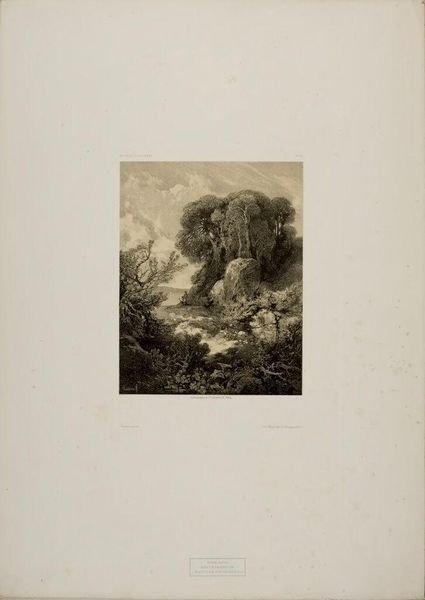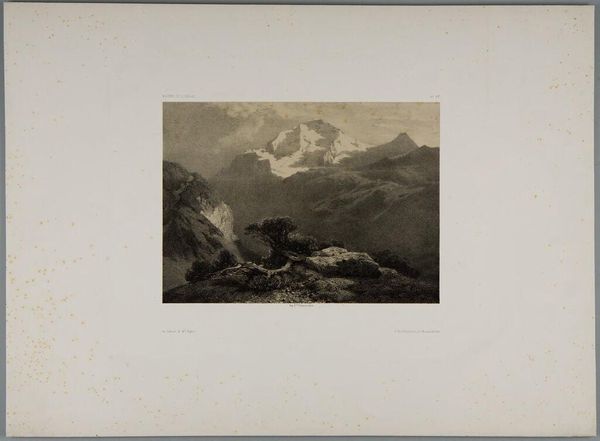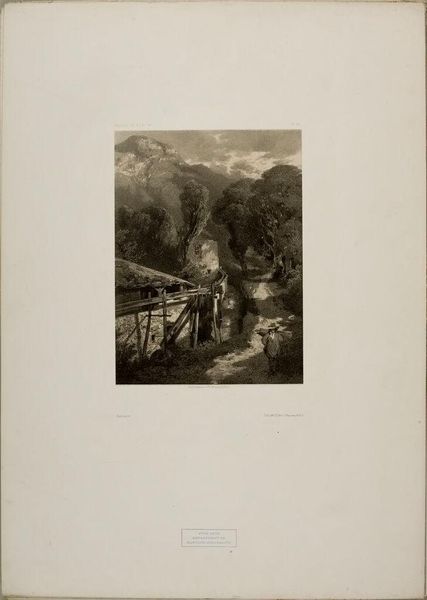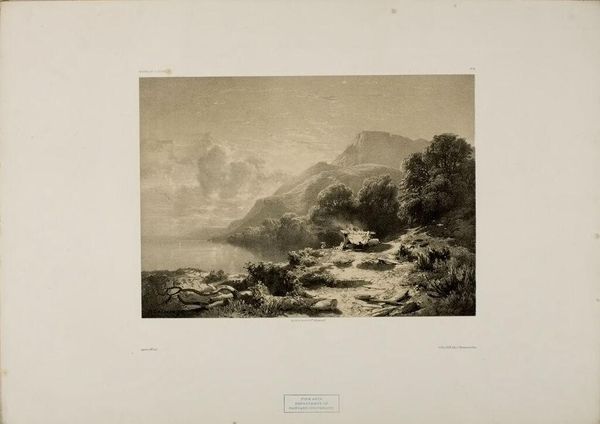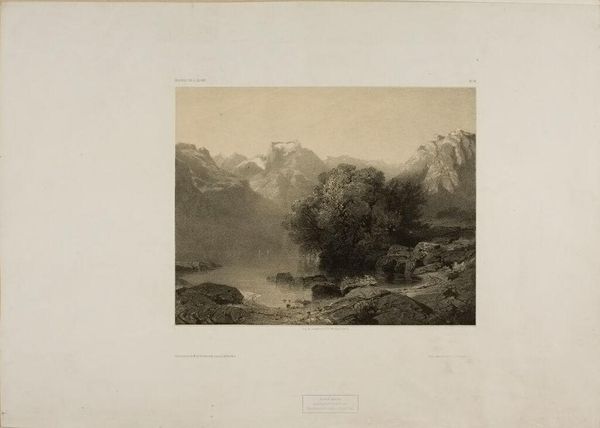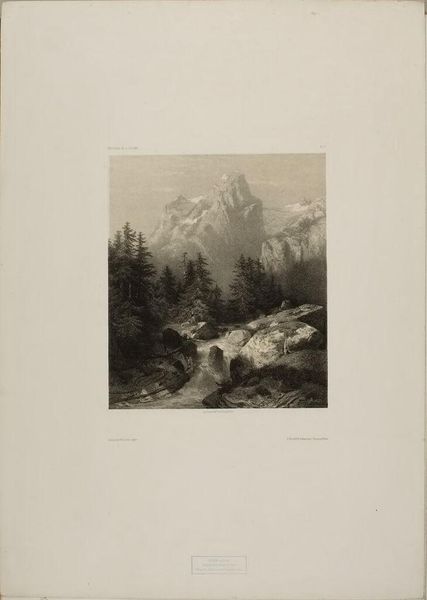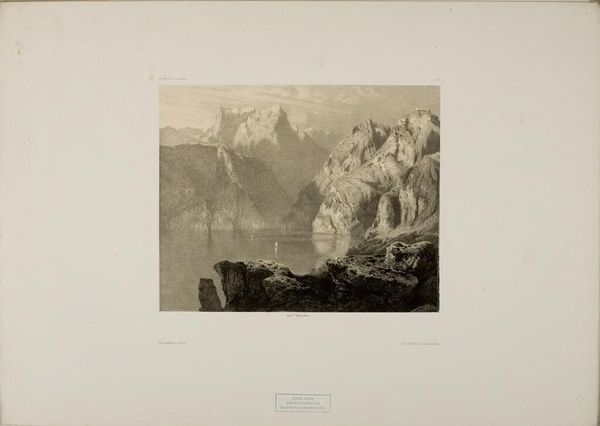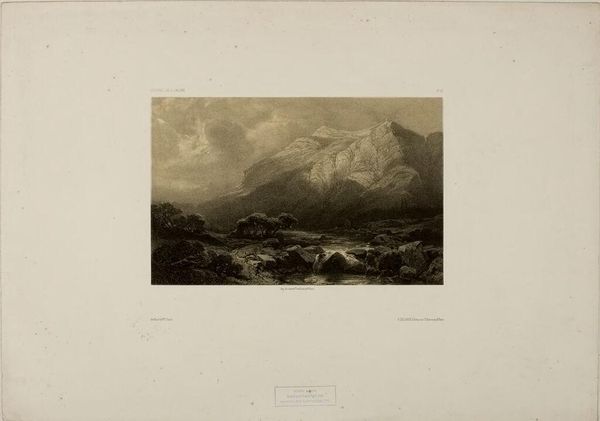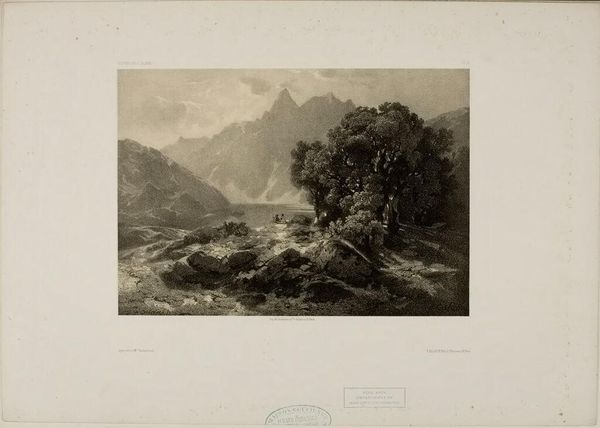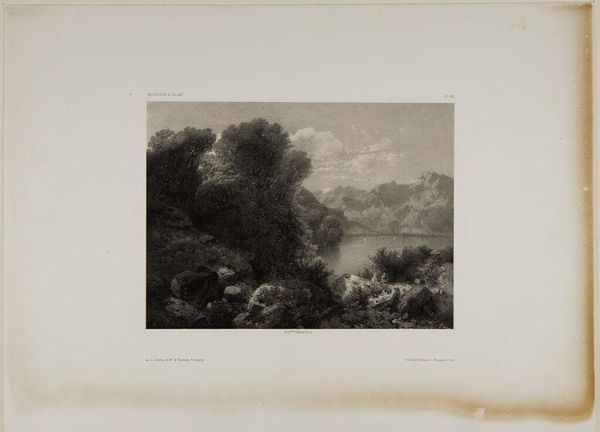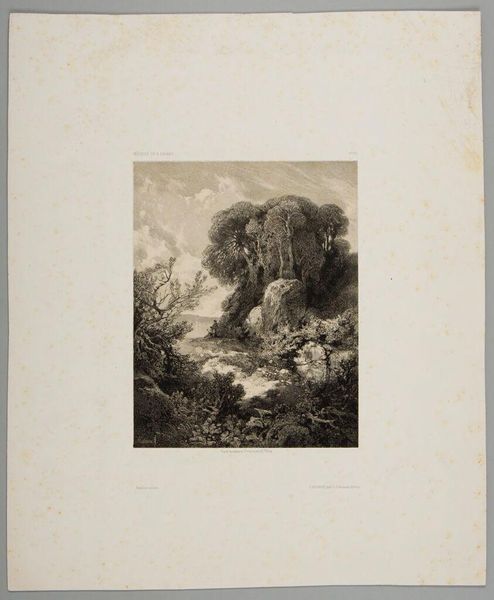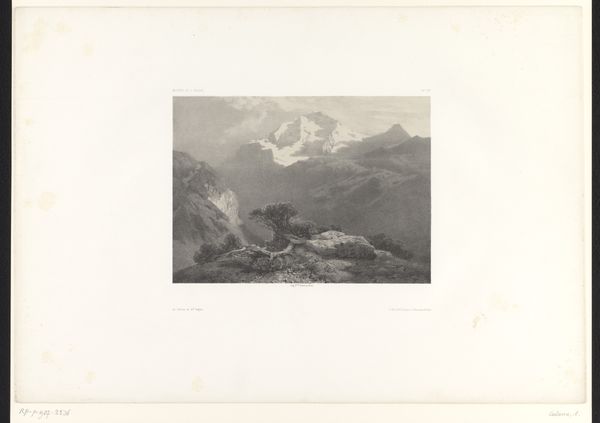
Copyright: CC0 1.0
Curator: Let's explore Alexandre Calame's "Landscape Number 38", currently held here at the Harvard Art Museums. Editor: Ah, the old Romantic impulse! Immediately I’m drawn into its almost theatrical drama—the way light struggles to pierce the dark, rocky foreground. Curator: Calame, a 19th-century Swiss artist, tapped into the rising bourgeois taste for sublime landscapes. Mountain scenes like these were particularly potent symbols. Editor: Absolutely. It's less about botanical accuracy, more about stirring up big feelings. You know, the kind that make you want to compose an epic poem, or at least dramatically sigh. Curator: Indeed. Consider the context: Europe grappling with industrialization, people longing for untouched nature. Calame's paintings offered a powerful, if idealized, vision. Editor: Looking at it now, I’m getting a "quiet before the storm" vibe, which resonates, given the historical anxieties of the era. Almost prophetic, in a way. Curator: A landscape imbued with a sense of historical foreboding, perhaps. It certainly invites deeper reflection. Editor: It does. It feels like more than just trees and rocks; it's a whole mood.
Comments
No comments
Be the first to comment and join the conversation on the ultimate creative platform.
